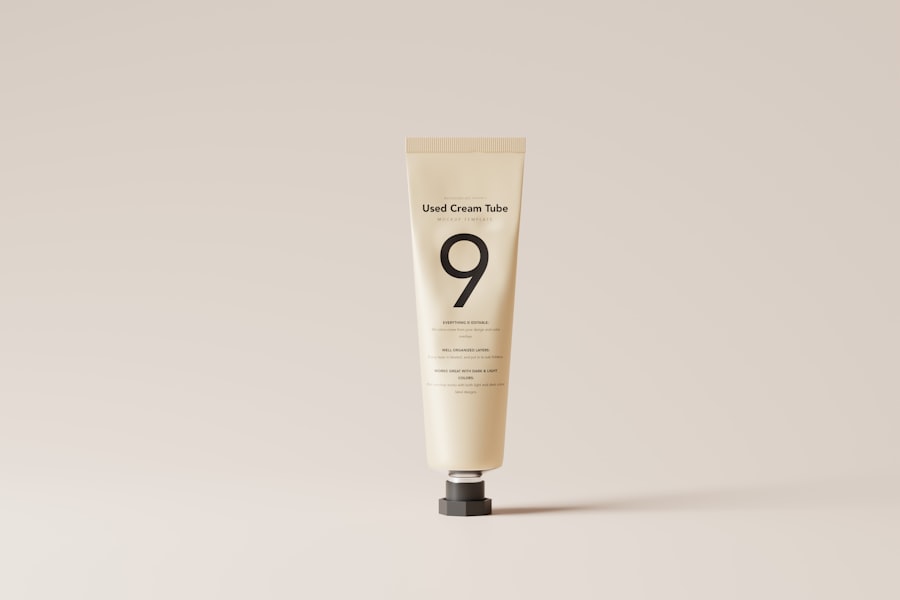After undergoing a cosmetic procedure, it’s essential to grasp the significance of the aftercare process. This phase is not merely a formality; it plays a crucial role in ensuring that you achieve the best possible results from your treatment. The aftercare process encompasses a series of guidelines and practices designed to promote healing, minimize complications, and enhance the overall outcome of your procedure.
By understanding these steps, you empower yourself to take an active role in your recovery, which can lead to a more satisfying experience. You may find that the aftercare instructions provided by your practitioner are tailored specifically to your treatment type and individual needs. It’s vital to pay close attention to these guidelines, as they are crafted based on years of experience and clinical evidence.
Whether you’ve had a laser treatment, chemical peel, or any other cosmetic procedure, adhering to the aftercare protocol can significantly influence your skin’s healing process. This understanding will not only help you navigate the immediate post-treatment period but also set the stage for long-term skin health.
Key Takeaways
- Aftercare process is crucial for the success of any skin treatment
- Clean and hydrate the treated area regularly to promote healing
- Avoid sun exposure and heat to prevent damage to the treated skin
- Regular exfoliation and moisturizing can help maintain the results of the treatment
- Manage any discomfort or irritation with proper care and attention
Keeping the Treated Area Clean and Hydrated
One of the cornerstones of effective aftercare is maintaining cleanliness and hydration in the treated area. Keeping the skin clean helps prevent infections and promotes faster healing. You should gently cleanse the area with a mild, non-irritating cleanser, avoiding any harsh scrubs or exfoliants that could aggravate your skin.
It’s advisable to wash your hands thoroughly before touching your face or the treated area to minimize the risk of introducing bacteria. Hydration is equally important in the aftercare process. After a cosmetic procedure, your skin may feel dry or tight, which is entirely normal.
To combat this, you should apply a suitable moisturizer that is free from fragrances and irritants. Look for products that contain soothing ingredients like hyaluronic acid or aloe vera, as these can help restore moisture and calm any inflammation. Keeping the treated area well-hydrated not only aids in recovery but also enhances the overall appearance of your skin.
Avoiding Sun Exposure and Heat

Sun exposure can be particularly detrimental following a cosmetic procedure. Your skin is often more sensitive and vulnerable during this time, making it crucial to protect it from harmful UV rays. You should avoid direct sunlight for at least a few weeks post-treatment, as sun exposure can lead to pigmentation issues and prolong the healing process.
If you must go outside, wearing a wide-brimmed hat and seeking shade can provide additional protection. In addition to sun exposure, you should also steer clear of excessive heat. Activities such as hot yoga, saunas, or even long, hot showers can exacerbate inflammation and irritation in the treated area.
Instead, opt for lukewarm water when cleansing your face and consider cooler environments during your recovery period. By being mindful of both sun exposure and heat, you can significantly enhance your skin’s healing process and ensure optimal results from your treatment.
Exfoliating and Moisturizing the Skin
| Product | Exfoliating Frequency | Moisturizing Frequency |
|---|---|---|
| Exfoliating Scrub | 2-3 times per week | Every day |
| Chemical Exfoliant | 1-2 times per week | Every day |
| Moisturizing Lotion | N/A | Every day |
Exfoliation is an essential part of any skincare routine, but it’s crucial to approach it with caution after a cosmetic procedure. While gentle exfoliation can help remove dead skin cells and promote cell turnover, you should wait until your skin has fully healed before reintroducing this step into your regimen. Once you receive the green light from your practitioner, opt for mild exfoliants that won’t irritate your sensitive skin.
Moisturizing should remain a priority throughout your recovery. A well-hydrated skin barrier is vital for healing and can help prevent complications such as dryness or flakiness. You might consider using a thicker cream or an occlusive agent to lock in moisture effectively.
This not only aids in recovery but also enhances the overall texture and appearance of your skin. Remember that consistency is key; regular moisturizing will yield better results over time.
Managing Any Discomfort or Irritation
Experiencing some discomfort or irritation after a cosmetic procedure is common, but managing these sensations effectively can make a significant difference in your recovery experience. You should follow any pain management recommendations provided by your practitioner, which may include over-the-counter pain relievers or prescribed medications. It’s essential to adhere to the recommended dosages and not exceed them, as this could lead to unwanted side effects.
In addition to medication, you might find relief through natural remedies such as cold compresses or soothing gels containing ingredients like chamomile or calendula. These can help reduce inflammation and provide a cooling effect on irritated skin. Listening to your body is crucial; if discomfort persists or worsens, don’t hesitate to reach out to your healthcare provider for further guidance.
Watching for Potential Side Effects
Being vigilant about potential side effects is an integral part of the aftercare process. While most individuals experience only mild symptoms following cosmetic procedures, it’s essential to be aware of what constitutes normal versus concerning reactions. Common side effects may include redness, swelling, or minor bruising; however, if you notice severe pain, excessive swelling, or signs of infection such as pus or fever, it’s crucial to seek medical attention promptly.
Keeping a close eye on how your skin responds in the days and weeks following your treatment will help you identify any unusual changes early on. Documenting your observations can also be beneficial when discussing any concerns with your practitioner during follow-up appointments. By being proactive about monitoring potential side effects, you can ensure that any issues are addressed swiftly and effectively.
Staying Consistent with Follow-Up Treatments
Consistency is key when it comes to achieving optimal results from cosmetic procedures. Many treatments require follow-up sessions to maintain their effects or enhance results further. You should adhere to the schedule recommended by your practitioner and prioritize these appointments as part of your overall skincare plan.
Missing follow-ups can lead to suboptimal outcomes and may require additional treatments down the line. In addition to scheduled follow-ups, staying consistent with your at-home skincare routine is equally important. This includes cleansing, moisturizing, and applying any prescribed topical treatments regularly.
By committing to both professional follow-ups and personal care routines, you set yourself up for long-term success in maintaining healthy, radiant skin.
Consulting with a Professional for Additional Advice
Finally, never underestimate the value of consulting with a professional for additional advice during your recovery process. Your practitioner is equipped with the knowledge and experience necessary to guide you through any uncertainties you may encounter post-treatment. Whether you have questions about specific products to use or concerns about how your skin is healing, reaching out for professional guidance can provide peace of mind.
Additionally, if you’re considering further treatments or adjustments to your skincare routine based on how your skin responds post-procedure, discussing these options with a qualified professional is essential. They can offer personalized recommendations tailored to your unique skin type and treatment history. By maintaining open communication with your practitioner, you empower yourself to make informed decisions that will benefit your skin in the long run.
In conclusion, navigating the aftercare process following a cosmetic procedure requires diligence and attention to detail. By understanding the importance of cleanliness, hydration, sun protection, and consistent follow-up care, you can significantly enhance your recovery experience and achieve optimal results. Remember that every step you take in this journey contributes to the health and appearance of your skin for years to come.
If you are looking for tips on how to maintain your skin after laser hair removal, you may want to check out the blog section of In Laser Hair Removal’s website. They offer valuable insights and advice on skincare routines and products that can help you keep your skin healthy and glowing post-treatment. You can find more information on this topic by visiting their blog at https://www.inlaserhairremoval.com/blog/.
FAQs
What is laser hair removal?
Laser hair removal is a cosmetic procedure that uses a concentrated beam of light (laser) to remove unwanted hair. The laser targets the pigment in the hair follicles, damaging them and inhibiting future hair growth.
How do you maintain after laser hair removal?
After laser hair removal, it is important to follow the aftercare instructions provided by your dermatologist or technician. This may include avoiding sun exposure, using gentle skincare products, and avoiding plucking or waxing the treated area.
Can you shave after laser hair removal?
Shaving is typically allowed after laser hair removal, as it does not disturb the hair follicle. In fact, shaving between laser hair removal sessions is often recommended to manage any regrowth.
How long does laser hair removal last?
Laser hair removal can provide long-lasting results, with many people experiencing permanent hair reduction after a series of treatments. However, some individuals may require occasional maintenance sessions to target any regrowth.
Are there any side effects of laser hair removal?
Common side effects of laser hair removal may include redness, swelling, and temporary discomfort in the treated area. In rare cases, there may be changes in skin pigmentation or scarring. It is important to discuss potential risks with a qualified professional before undergoing treatment.






